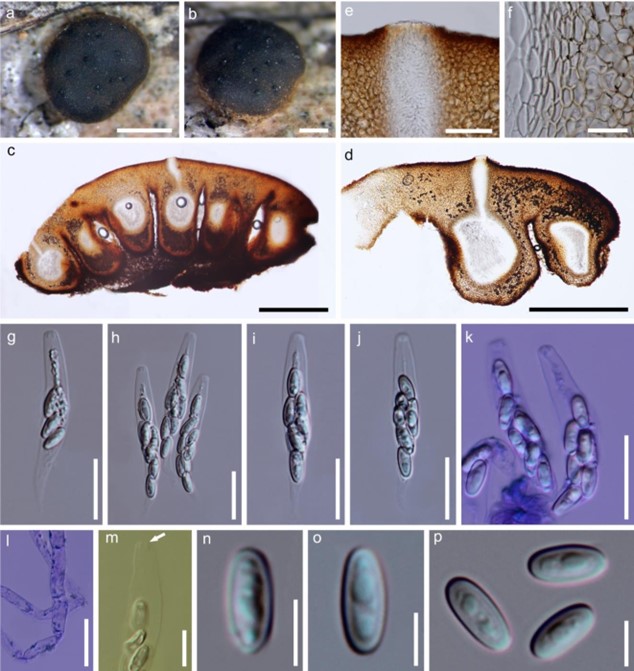Catabotrys Theiss. & Syd., Annls mycol. 13(3/4): 297 (1915)
Index Fungorum number: IF 834; MycoBank number: MB 834; Facesoffungi number: FoF 05087; 2 morphological species (Species Fungorum 2020), 1 species with sequence data.
Type species – Catabotrys palmarum (Pat.) Theiss. & Syd.
Current name – Catabotrys deciduum (Berk. & Broome) Seaver & Waterston
Notes – Catabotrys was erected by Theissen & Sydow (1915) based on Bagnisiella palmarum Pat. and has been placed in Dothideaceae (Dothideae). Petrak (1934) transferred Catabotrys to Hypocreales because its thin-walled asci and bright-coloured stroma are similar to the latter. Seaver & Waterston (1946) synonymized an earlier name, Hypoxylon deciduum as Catabotrys deciduum. Morphologically, Catabotrys is characterized by superficial, erumpent, multi-loculate stromata, and simple hyaline, 1-celled spores. Catabotrys deciduum is illustrated in this entry (Fig. 56).

Figure 56 – Catabotrys deciduum (Material examined – THAILAND, Chumphon, Amphoe Pathio, on rachis of Salacca sp. (Arecaceae), 1 December, 2016, S.N. Zhang SNT33B (MFLU 18-1072); THAILAND, Ranong, Amphoe Mueang Ranong, on decaying petiole of oil palm (Arecaceae), 29 August 2017, S.N. Zhang SNT214, MFLU 18-1073, HKAS 97484; living culture MFLUCC 18- 0463). a, b Appearance of stromata on host surface. c, d Vertical section through the stromata with ascomata. e Ostiole with periphyses. f Structure of peridium. g-k Asci. k Asci in Cotton blue reagent. l Paraphyses. m Ascus apex in Melzer’s reagent, with J-, subapical ring. n-p Ascospores. Scale bars: a = 1000 μm, b-d = 500 μm, e = 50 μm, f-l = 20 μm, m = 10 μm, n-p = 5 μm.
Species
